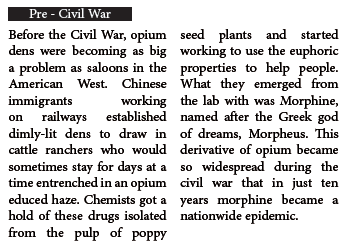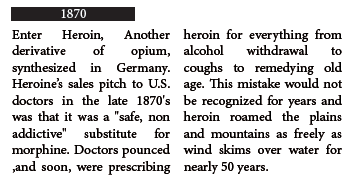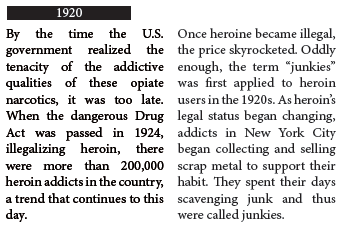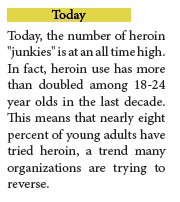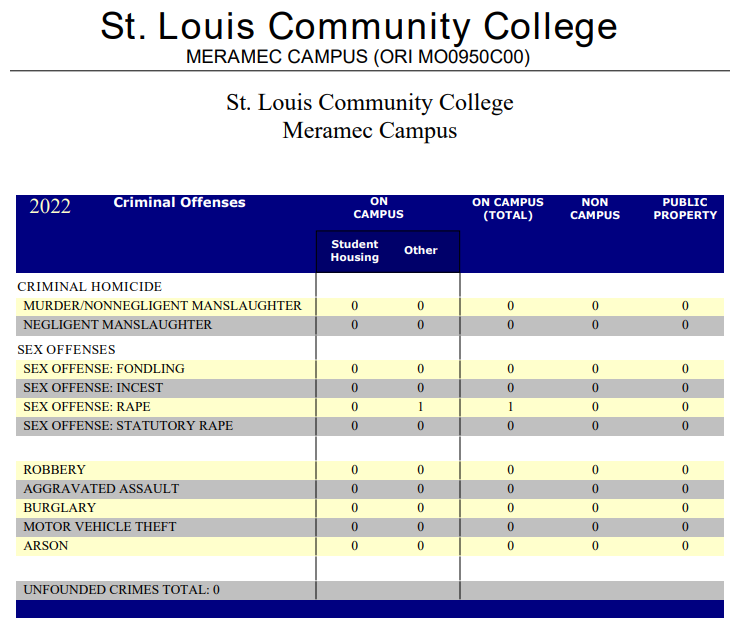A brief history, a life saving drug for overdose, and how to get help
Narcan: The Heroin Hero
By: EVAN CARLEN
Staff Writer
Somewhat of a miracle drug came on the scene in the 90s and proponents have been pushing for the expansion of availability of it ever since. This drug is called Narcan or Naloxone. Narcan is a drug that, when administered, reverses a heroin overdose. Narcan is an opiate antagonist and
works by kicking the heroin out of the opiate receptors in the brain and is available for intravenous, intramuscular, and subcutaneous administration.
Since 2000, more and more paramedics and even police officers have started carrying Narcan at all times in case of a call involving an overdosed victim. Some have argued that Narcan enables junkies by masking the consequences of dependency. Most discount these claims saying a user isn’t planning on overdosing and that making this drug less available would lead to more fatalities. Users must be careful after use of Narcan because they will feel completely clean and most likely be tempted to use again. It is imperative that this does not occur because despite not feeling the effect of opiates in their system, the overdose amount is still coursing through their bodies and further use is extremely dangerous.
How to get help
By: DALILA KAHVEDZIC
Editor-In-Chief
Hero Inside is a community-run organization which utilizes music to spread awareness about the use of heroin and how to overcome an addiction – how someone can find the “hero inside” of themselves.
Co-founder Nick Menn lost three friends to heroin-related deaths in less than eight months and decided to write a song titled “Hero Inside.” This song provided understanding on heroin and the idea to grow an organization for awareness, which was born in 2012.
Hero Inside was started with events for people who cannot afford rehab, Nick Menn said in a phone interview.
Members of this organization just want to help, Menn said.
“We help individuals get to a trusted place, get treatment and figure out how to pay,” Menn said.
Hero Inside also helps families pay for funerals who are struggling to do so because they believe cost should never be a deciding factor when an addict needs help.
“I’m a rapper for Christ’s sake,” Menn said as he laughed.
Although Hero Inside does not have a central location because it is a community effort, if anyone is interested in volunteering, donating or sponsoring their next event, send an e-mail to: he roins i d eorf@gmai l . com or visit their website: Heroinside.org for more information. They have ‘Hero Inside Day’ coming up – an awareness and no-judgment event in Fairview Heights, Ill. at Everett Moody Park on April 16 from 12-9 p.m. Students can go to have a relaxed time while also learning
A history of heroin
By: EVAN CARLEN
Staff Writer
Heroin is becoming ever more prevalent here in St.Louis. But what is heroin? Where did it come from and why was it synthesized? To answer these questions, one must first go back in time to the pre-civil war period.
The lowest point of the high
By: DALILA KAHVEDZIC
Editor-In-Chief
To lose a brother to a heroin addiction was devastating, said a Meramec professor who wishes to remain anonymous. It affected him and his family tremendously.
“We tried the intervention, we tried different counseling throughout the years. He died when he was 52 but we started noticing a problem when he was in high school,” he said. “So it’s been going on for 30 plus years.”
His brother had been battling a heroin addiction for the past three years, but the problem with drugs in general came before he was even 20 years old.
“It started with pot – like most people – and I believe he had some sort of a medical issue where he had to take pain pills and then after the pain pills, after he got better, I guess he decided he liked to used pain pills for recreational use. From there, for whatever reason, he decided that heroin was the next step,” he said.
With his family, they tried to help his brother in many different ways, he said.
“We tried formal programs that are set up for drug counseling and then he would get clean for a while – go through the counseling, go through the different steps that they’d recommend – but then his habits wouldn’t really change. He was still hanging out with the same people and they would still do the same thing,” he said.
None of these solutions worked for his brother.
“Some of them worked somewhat but then he kept thinking – ‘now is the time to get better’ – and they always said you had to bottom out but that bottom never happened,” he said.
His last hospitalization lasted three days for rehab.
“He told me he felt like he turned a corner. He felt like he was really ready to make a change in his life,” he said.
His brother had said this before, but not to this degree.
“So I felt like he was probably ready, I felt like he meant it – it was something in his voice, it was something different that changed,” he said. “That was on Wednesday that I talked to him, and by Saturday he was gone.”
His brother was living with someone who had a similar lifestyle.
“Sunday we were going to talk about his next steps – where to go, where to live. He was going to move out of this guy’s house – we had to change the environment,” he said. “You can’t put an addict back into an addicts house and expect any change.”
He was set up there, it was cheap rent, it was a friend of his so he would have had to change his whole lifestyle which is what they were going to talk about on Sunday – but they never got a chance, he said.
He felt empathy for his brother based on personal experience having been prescribed Percocet – also known as white collar heroin. Addiction is easy, he said. He could feel himself being one pill away from being an addict.
“Every day I wake up with some sort of pain, somewhere in my body something hurts – that’s just part of getting old. So when I took Percocet, all my pain was gone,” he said. “It didn’t concentrate on just my leg or my joint or something else – it gets rid of all that pain and you’re feeling pretty good.”
So he knew that there was going to be a point where it was going to be very difficult to get off.
“I knew there was a potential for me to be an addict,” he said.
He went back to the doctor to try to get prescribed something else, and the doctor told him that was the best pain killer to give him – and proceeded to hand him another bottle.
“I said ‘isn’t there something else I can take?’ and he said no. He didn’t really care about the after effects, he cared about my pain,” he said.
The pain was so bad it crossed his mind to take Percocet again, so he told his family members to throw away the bottle.
Had the bottle been around, he would have been tempted, he said.
“It would’ve been so much easier if I would’ve had the bottle there and look at it and say – ‘I could take one more pill it’s not going to be a big deal, and then a second pill and a third pill,’” he said. “I’d much rather deal with the pain than the after affects. It took me a whole week to get off of that Percocet, a full seven days.”
For the first few days he was very tired, drowsy and slept a lot, he said. The third day and two days after, he felt like his skin was crawling from the inside out. The nausea set in for the next two days and on the last day, he was tired again.
“By that time I think the drug got out of my system enough where I thought I could handle it,” he said. “That was seven days of hell.”
Kids nowadays do not realize the consequences of getting hooked on prescription pills such as Adderall, he said. Kids do not have the capacity to think long-term consequences.
“They think it’s okay, they don’t realize the consequences. Some of the doctors – they prescribe these things like candy and they don’t think about what it’s causing that person to go through – all they’re doing is dealing with the pain,” he said.
It is so easy for doctors to misdiagnose patients, he said.
“Kids lie just to get the drug because they know what it’s worth and they know they can get high off it,” he said. “I think prescription drugs are certainly a big issue in this country, we have to deal with that problem. And how do you deal with that problem when most of congress is bought by big pharmaceutical companies?”
Dealing with a family member who struggles with addiction comes with strategies, he said.
“[Help] As best they could – with any junky that is coming off it – you just have to be with them and talk with them,” he said.
Giving up is not an option when it comes to family members or friends struggling with an addiction, he said.
“Don’t give up – keep talking to them, keep talking to other people, keep trying to get them in counseling and try different combinations of drugs and therapy – some combination will work if you have enough time. We just ran out of time,” he said.
Personally, within the family, they tried everything to help.
“We did everything that we could and ultimately it comes down to the person – they have to want to change. We can sit and talk to him all day, which we have. We can counsel him, we can put him in different therapy groups, but until they recognize they have to change there’s only so much we can do,” he said.








